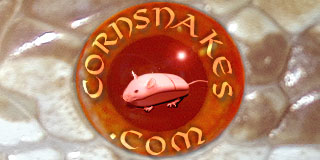I appreciate the replies, but maybe I just don't understand genetics as well as I thought. I still don't understand where the normal genes are located. The female is homozygous for leucistic. She doesn't have the genes responsible for melanin, xanthin, or erythrin in scales, but does have normal, dominant eye color. My male is homozygous for amel, charcoal, and diffusion (although that last one involves more than one gene). He does not possess genes for pigment. If these dominant, normal genes were present anywhere, they would be expressed. All offspring should, in my understanding, possess only genes that each parent has, and in this case these genes may not even line up or be at the same locus as one another. So rather than being white because they're homozygous or heterozygous for something, they will be white because they simply possess no genes that code for color, except the eyes, which are dominantly dark over the recessive amel pink eyes. Then again, we are talking two different species, so normal punnett squares may not apply.
Even though they are different species a punnet square is ok in this case because they probably share almost all loci.
Leucism is usually not caused by lacking the ability to make pigments per se. Its caused by an inability to make the pigment cells or impaired ability of those cells to migrate from the neural crest during development. That is why leucistics have normal eyes, because the pigment cells in the eyes form separately and don't have to migrate a long distance to their final location like the pigment cells in the skin do. So say the genotype of your leucistic rat is ll (leucism in black rat is actually incomplete dominant as you can tell which offspring are heterozygous, but the hets wind up looking normal as adults, so I'm going to treat it like a recessive to make things easier) Albinism is caused by inability to make melanin and is recessive, charcoal is recessive, and so is diffused. Your black rat is wt at those loci so the total genotype is AA, CC, DD, ll (capital letters denote the allele that is dominant, which is the wt allele for each of these genes).
Your corn snake is wild type at the locus where the leucistic mutation is in your rat snake, but is homozygous for the recessive mutant alleles at the charcoal, amel, and diffused loci. So his genotype is LL, aa, cc, dd.
Mating them will yield babies who are all Ll, Aa, Cc, and Dd. As you can see, each baby has one normal allele for each of the 4 genes involved. Even if the loci don't "line up" ie, are at different chromosomal locations in the two species, it won't matter, since the hybrid babies will have one copy of each chromosome from the corn and one of each from the rat. Regardless of where the normal alleles are chromosomally, those normal alleles will produce the normal protein which will be enough to make the snakes look normal (although they will be hybrids).
The reason recessive alleles are, well, recessive, is because usually they result from a mutation that totally inactivates a gene or causes the protein product of that gene to be nonfunctional. But since snakes have two copies of every gene, if one normal allele is present, it makes the functional product which is enough for the animal to look normal. For example, the amel mutation causes that allele to not produce a functional product. An animal that is het for amel is only able to produce 50% of the normal gene product compared to a snake that is homozygous for the normal allele, but that is enough to get the job done so the het animals look normal.
Does that help?
